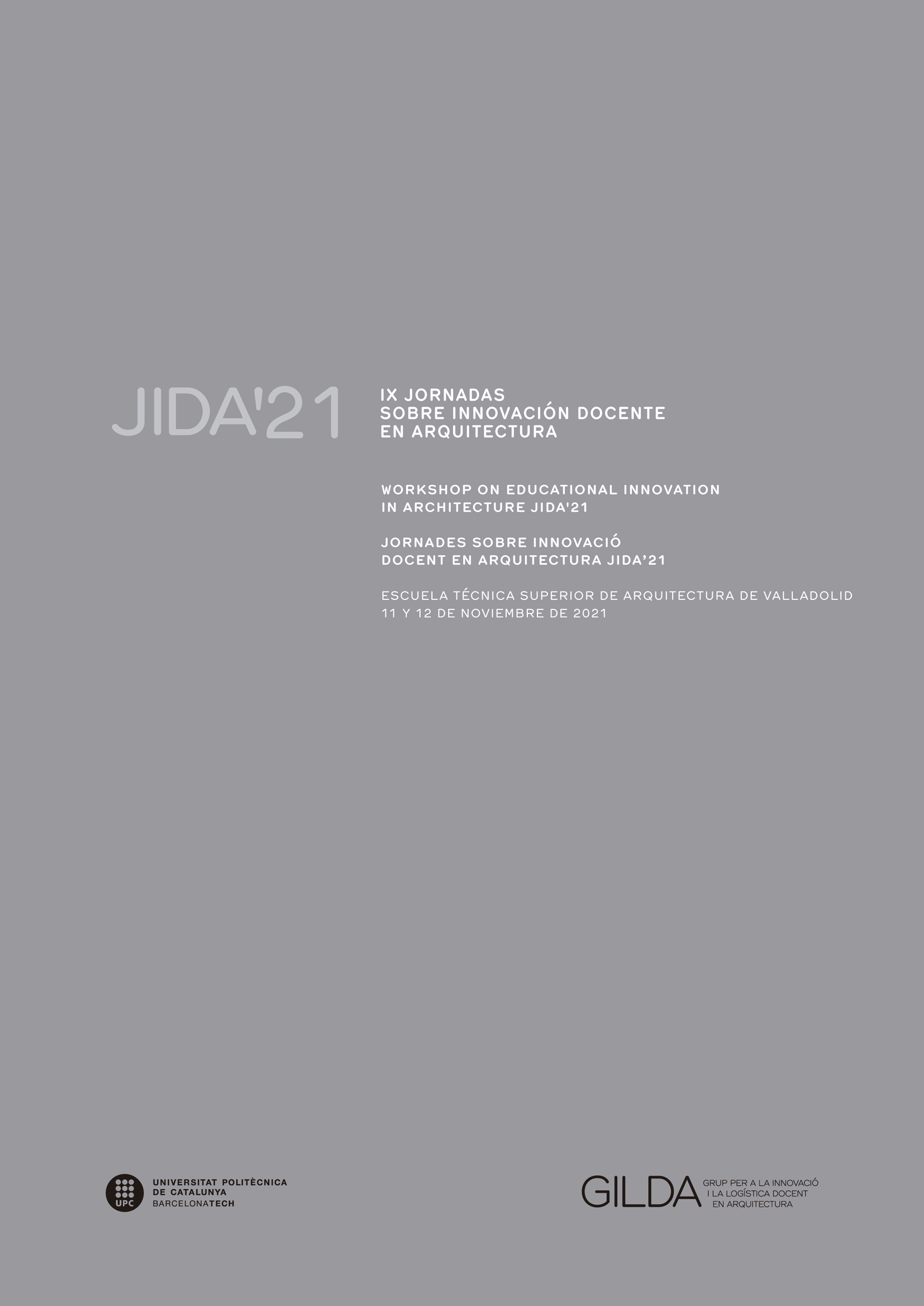Participatory urban planning: a teaching tool for uncertain times
DOI:
https://doi.org/10.5821/jida.2021.10591Keywords:
participatory urbanism, transdisciplinary education, open university, democratic education, service-learningAbstract
Crises and uncertainties characterise the current life space of future professionals while there is a widening gap between academia and the territorial governance system and society. The teaching of urban planning is questioning itself how to prepare university students for these challenges, taking advantage of this situation to propose adaptive pedagogical methods that emphasise constructive nuances in
a creative and participatory way. The experience of the Covadonga Urban Lab (2019-2020), Erasmus +, during the time of the Covid 19 pandemic, multiplied the difficulties and challenges of a process designed by specific objectives and teaching methodologies that included the participation of local actors and various universities. The results showed that open education processes, as well as participatory processes, make it possible to address the desirability of revising not only the academic system, but in parallel, the current model of governance of the territory.
References
BAUMAN, Z. (2007). Els reptes de l’educaciò en la modernitat liquida. Barcelona: Arcadia.
CARRASCO, M. y SELVAS, S. (2012). “Processos de codi obert” en Carrasco, M., Selvas, S. (eds.) Inter-Accions. Pràctiques col·lectives per intervencions a l’espai urbà. Reflexions d’artistes i arquitectes en un context pedagògic col·lectiu. Barcelona: Universitat de Barcelona, Universitat Politècnica de Catalunya. pp.77-83.
FAVA, N.; CARRASCO BONET, M.; y KOURKOUTAS, K. (2020). “Covadonga Urban LaB” en Llengua i Cultura, 50, 1719.
FEYNMAN, R. P. (1999-2002). Il piacere di scoprire. Milano: Adelphi.
FRANQUESA, J. (2020). “La ciudad participada” en JIDA. Textos de arquitectura, docencia e innovación 8, 26-29.
ECO, U. (1962). Opera aperta. Forma e indeterminazione nelle poetiche contemporanee. Milano: Bompiani.
DEMATTEIS, G. (1995). Progetto implicito. Il contributo della geografia umana alle scienze del territorio. Milano: Franco Angeli.
GARCÉS, M. (2020). Escola d’aprenents. Barcelona: Galaxia Gutenberg.
KRIVÝ, M. y KAMINER, T. (2013). “Introduction: The participatory turn in urbanism” en Footprint, (13), 1-6. <https://doi.org/10.7480/footprint.7.2.766>
LADDAGA, R. (2006). Estética de la emergencia. Buenos Aires: Adriana Hidalgo.
MORONI, S. (2010). “Rethinking the theory and practice of land-use regulation: Towards nomocracy” en Planning Theory, 9(2), 137-155. <https://doi.org/10.1177/1473095209357868>
ORIOLI V. y MASSARI M. (2020). “Lo spazio dell'interazione: luoghi, attori e strumenti a Bologna” en Le nuove comunità urbane e il valore strategico della conoscenza. Come i processi cognitivi possono motivare la politica, garantire l'utilità del piano, offrire una via d'uscita dall'emergenza. Roma_Milano: Planum Publischer, 186-192.
PEREC, G. (1974). Espèces d’espaces. Paris: Galilée.
RAYMOND, E. (1999). The Cathedral and the Bazaar. Musings on Linux and Open Source by an Accidental Revolutionary. Sebastopol: O’Reilly & Associates, Inc.
SERRA-PERMANYER, M. (2020). “La docencia en arquitectura participada: oportunidades más allá de lo inclusivo” en JIDA. Textos de arquitectura, docencia e innovación 7, 40-47.
SANTINI C.; MARINELLI, E.; BODEN, M.; CAVICCHI, A.; y HAEGEMAN, K. (2016). “Reducing the distance between thinkers and doers in the entrepreneurial discovery process: An exploratory study” en Journal of Business Research, 69(5), 1840-1844. https://doi.org/10.1016/j.jbusres.2015.10.066
SENNETT, R. (2018). Building and Dwelling: Ethics for the City. London: Penguin Books.
SENDRA, P. y SENNET, R. (2021). Diseñar el desorden. Experimentos y disrupciones en la ciudad. Madrid: Alianza editorial.






















